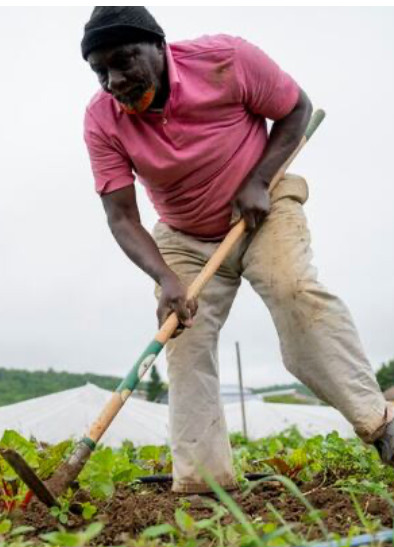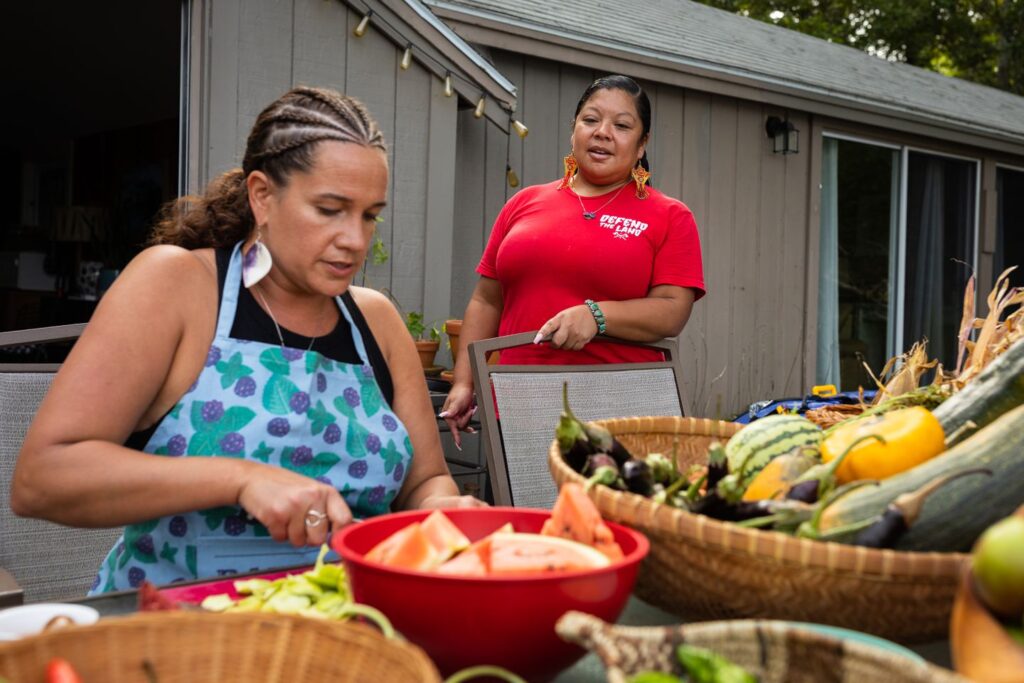Winner of the 2021 Society of Professional Journalists Sigma Delta Chi Food & Restaurant Journalism Award
Awarded for the 6-part Boston Globe series "States of Farming,"
which looked at BIPOC farmers in New England.
"Well-written and comprehensive, Ruggiero’s articles offer insight into the region’s unique agricultural communities and the people who are behind their growth.”
A Somali Bantu refugee farmer thrives in Maine
Liberation Farms supports Somali Bantu refugee farmers to develop viable farm businesses By Jocelyn Ruggiero Globe correspondent, August 1, 2023 WALES, Maine — Seventy-two-year-old Ahmed Baraki leans forward, his back parallel to the ground, and vigorously rakes his “yaanbo,” or hoe, loosening the weeds that cluster around the young cabbage and Boston lettuce sprouting in long, straight lines on the narrow half-acre plot he shares with four other farmers. He regularly pauses to yank clusters of greens and dirt from the ground and the yaanbo’s blade. There’s a light breeze on this cloudy and unseasonably cool June day, and the air at Liberation Farms smells like manure and compost. As is the Somali Bantu custom, Baraki takes his sandals off and lets his feet sink into the earth before continuing to slice the short end of his blade at the ground, carefully avoiding the drip irrigation tape. Soon, he stops his work and drives his mud-splattered orange SUV to the back of the 42-acre property, where, on a smaller plot of land, he continues with another pressing project: seeding flint corn that will eventually be ground and sold as Liberation Farms cornmeal. As in Somalia, Baraki places five seeds in each hole, using his bare feet to sweep soil over the top. It’s not just traditional farming practices that Baraki retains from Somalia; the seeds he plants are the descendants of seeds he brought with him when he fled his home 40 years ago. Although the setting is different, Baraki spends his days in Maine farming just as he did in Somalia. In his new home, however, he’s learned skills that augment his traditions in transformative ways. Read Full Article.
SHONDALAND: My Love of Reading Has Shaped My Entire Life
It’s a crisp Saturday afternoon in 1980, and I stand in the center of the gift shop at Old Sturbridge Village in Sturbridge, Massachusetts, surrounded by beckoning shelves. Radiant light filters in through the windows. Across the room, a cluster of items catches my eye. I walk over, crouch down, and run my fingers over the row of books until I stop. The flatness of the black typeface extending along the turquoise spine belies the danger promised by its title: Mystery at Old Sturbridge Village. I pull out the book. In the center of the cover, two girls crouch in darkness, facing the entrance to the village’s lattice truss covered bridge. They both sport identical shoulder-length bobs, sweaters, and skirts, only one is blonde with a red sweater, and the other wears a pale blue sweater and has brunette hair, just like me. The brunette holds up her right hand in a gesture of fear. It’s nighttime in the picture, and the branches of a gigantic maple tree loom ominously over them. My heart races. I am certain: This will be my first chapter book. I was 7 years old when I left children’s picture books behind and graduated to stories told in prose. Click on title to find link to Full Article
THE BOSTON GLOBE: ‘In caretaking each other, we know that we can provide and have what we need, and that’s how we live abundantly’
The Eastern Woodlands Rematriation Collective nourishes abundance in Indigenous communities throughout New England October 12, 2021 CENTERVILLE — Hidden from view at the base of a steep wood and brick stairway, Rachael Devaney’s family cottage sits on the shore of Long Pond, mid-Cape. This water is home to many creatures: muskrat, opossum, ducks, snapping turtles, frogs, minnows, and freshwater clams, while osprey, eagles, and seagulls populate the sky above. There’s a saltwater exchange on the shore opposite the cottage — the pond is less than two miles from the Atlantic Ocean — and, in Eastern Woodlands culture, a waterway that flows between fresh and salt is a place of regeneration and cleansing. Click on title to find link to Full Article.



